Story-Composing Cultural Assets Kanzeon-ji Temple・Kaidan-in Temple
Kanzeon-ji Temple
Empress Saimei headed to Baekje (One of the three kingdoms of ancient Korea which ceased to exist in the year 660) to restore it. However, she died in Tsukushi (Fukuoka) in the year 661.
Kanzeon-ji Temple was built on the wish of her son, Emperor Tenji in memory of her. It took about 80 years to complete and held a memorial service for the finished Garan (a complex of temple buildings) in the year 746. In 761, “Kaidan-in” was also built for delivering the commandments of Buddhism.
Kanzeon-ji Temple was called “Fu-no-odera (A Large Temple of the Province)” and it was the top Buddhism temple in Kyushu.
More
-
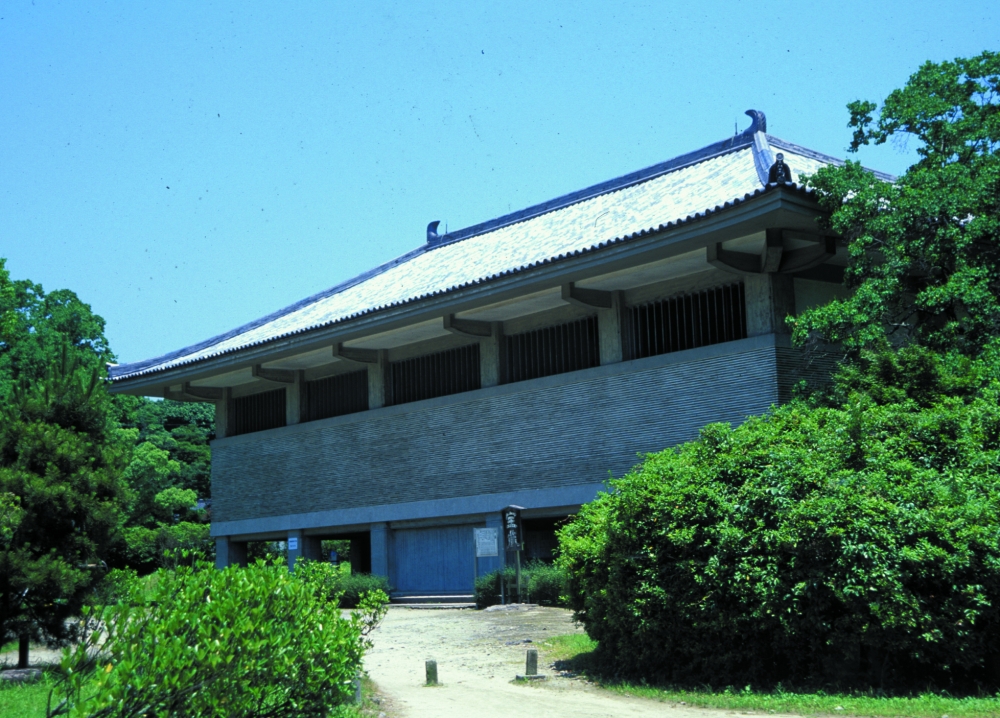
Kanzeonji Treasure House
This is a repository imitating the original storehouse on the east side of the Main Shrine.
Many cultural assets are stored here such as a 5m tall sculpture, many cultural assets passed on in Kanzeon-ji Temple and many of them are designated as National important cultural properties.
The oldest sculpture is “Tobatsu Bishamonten” placed at the center as you go up the stairs. It was made in 9th century; this Buddha is considered as a guardian Buddha Bishamonten who appeared in “Tobatsu” the western country of the Tang dynasty.The same kind of sculpture was placed at southern gate of Suzaku Road Rajo-mon Gate (Main entrance) in Heiankyo in Kyoto. So this statue was most likely placed originally at “Rajo-mon Gate” in the ancient city of Dazaifu Jobo.
The original tiles of the temple are displayed as well. Tiles with saw-tooth patterns around lotus flowers are also found in Kawahara-dera Temple of Asuka in Nara (One of the four greatest temples of Asuka) and Fujiwara-kyo Palace (from 694 to 710) which had connection with an emperor from the late 7th century.
At Kanzeon-ji Temple, there were performers of Gigaku (an ancient pantomime in which performers wear masks) which originated on the continent. In “Nihon Shoki (Chronicles of Japan)”, it was recorded that “Gigaku performers were sent from Kawara-dera Temple to Tsukushi (a name of Fukuoka province at that time) to entertain delegates from the Silla dynasty of Korea in 686”. Most likely this is the origin of Gigaku in Kanzeon-ji Temple. A record of the temple in 905 describes details about conditions of new and old equipment of the Gigaku. You can see the historical “Bugaku Mask (a mask which was used for Bugaku dance)” here. It is a nationally important cultural property.
In addition, there are many cultural assets indicating cultural exchanges both inside and outside Japan such as fired bricks with beautiful patterns influenced by the Silla dynasty and a statue of a lion (one of the nationally important cultural properties) influenced by the Sung dynasty of China.More
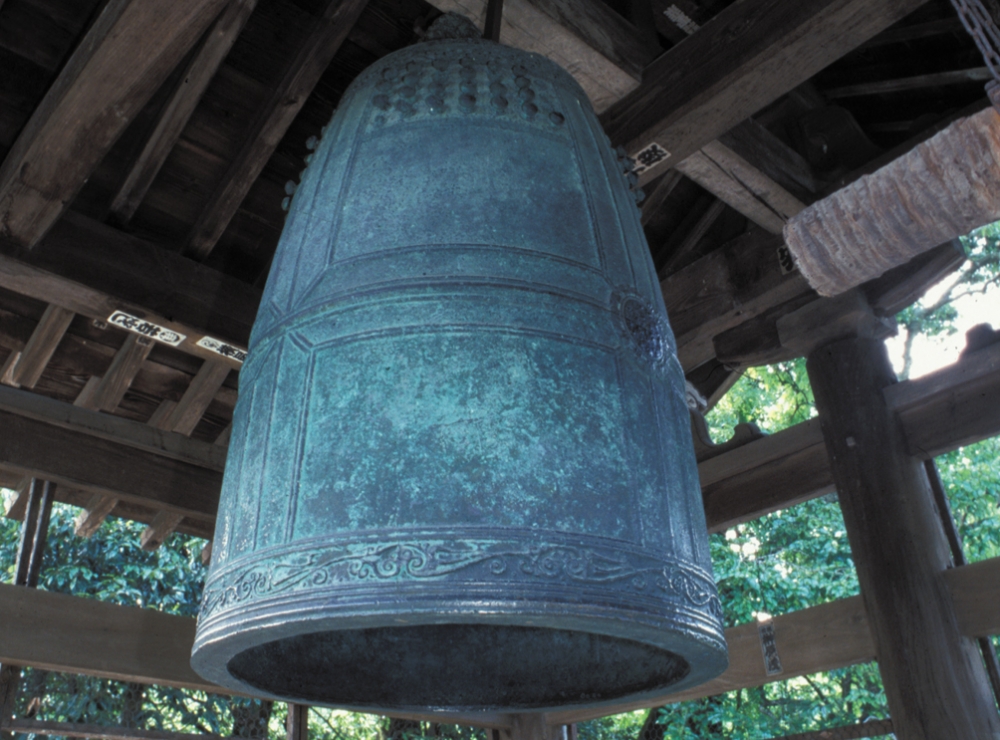
Kanzeon-ji Temple Bonsho Bell
This is the oldest bell in Japan, belonging to the bell tower of Kanzeonji Temple. This is the very bell that Sugawara-no-Michizane wrote about in a Chinese-style poem titled “Mon wo Idezu.”
It is still used today, and rings as clearly as it did in ancient times.
(This temple bell is currently on display at the Kyushu National Museum)
More
Kaidan-in Temple
“Kairitsu” is a religious commandment that monks have to follow. Followed this receiving ceremony, a person became a priest or nun.
This Buddhist commandment was brought by a monk named Ganjin from the Tang dynasty. Ganjin finally came to Japan after 6 attempts during which time he lost his vision. On the way to Heijokyo he stopped at Kanzeon-ji Temple and in December 735, he presented the first Buddhist commandment in Japan.
In the year 761, Kaidan-in was built in Kanzeon-ji Temple as a place for delivering the commandments of Buddhism in Kyushu. Along with Todai-ji Temple (Nara) and Shimotsuke Yakushi-ji Temple (Tochigi), it was included among “Three Official Ordination Halls in Japan”.
More
-
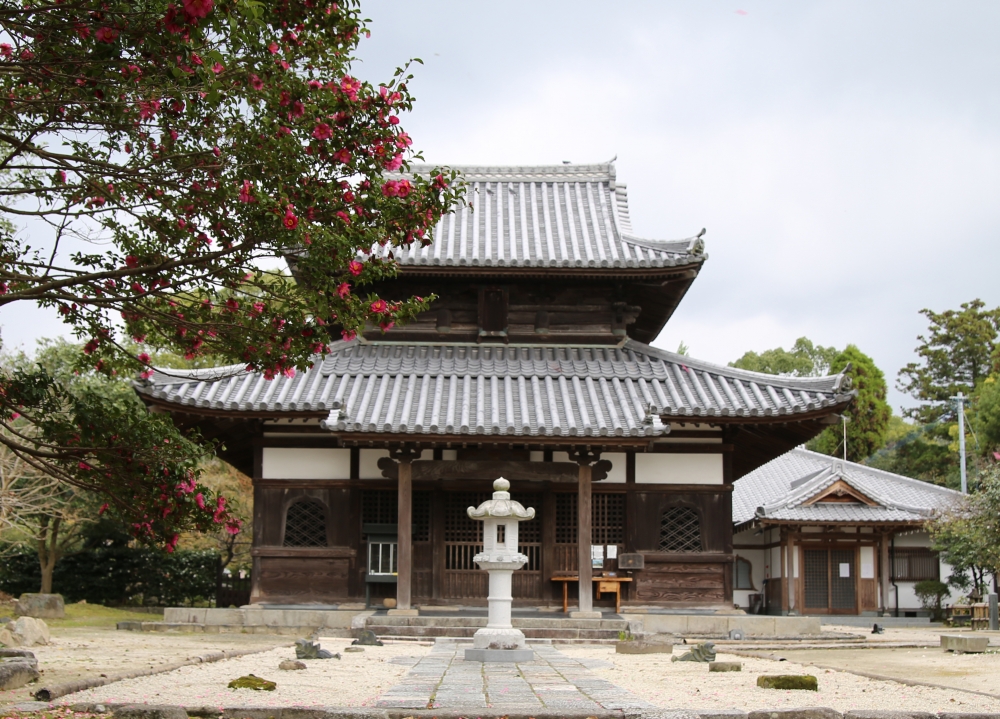
Main Temple
Based on a record and an old sketch map from 905, Kaidan-in had two buildings lining up from east to west. And from the record of 1148, it said that there were five column spaces.
Later Kaidan-in declined and in 1668 it restarted as Zen Temple. The Current Main Hall is a Zen-sect-style building which was likely rebuilt in 1680.
Its principle statue of Buddha is Rushanabutsu (National important cultural property); same as Toudai-ji Temple in Nara. It seems like it was made in the 12th century.
At the right side Monju Bosatsu stands and to the left side Miroku Bosatu also stands. Both of them are designated cultural properties of Dazaifu city. Both of them were made by a sculptor of Buddhist statue from Kyoto and completed here during the Edo era.Around this time, Bonsho Bell (Designated cultural property of Fukuoka), a statue of Ganjin (Designated cultural property of Dazaifu) and a statue of Kukai who had a link to Kanzeon-ji Temple were all made.
The Middle area is “Kaidan” where you receive commandments of Buddhism. It has been said that the soil of Tianzhu (India), Tang (China) and Nara (Japan) were stored here.More
A Grave of Genbo
There is a stone tower known as a grave of a monk named Genbo at the northwest side of the Kanzeon-ji Temple main shrine.
Genbo went to the Tang Dynasty and lived there for 18 years. He was approved by Emperor Xuan Zong and received a purple Buddhist priest’s stole. He came back to Japan in the year 735 and became a pillar of administration but he provoked opposition from some people. Fujiwara-no-Hirotsugu incited a revolt to eliminate them in Dazaifu but he was captured and killed.
Genbo was demoted as a supervisor of building Kanzeon-ji Temple in the year 745 and held a memorial service for completing the project, but he died suddenly on that day. It is written in a history book that Genbo was killed by an apparition of Fujiwara-no-Hirotsugu.
More
-
A Grave of Genbo
It has been said that Genbo was killed by a spirit of Fujiwara no Hirotsugu who died in Dazaifu because of his rebellion against the Imperial court.
According to the legend, in 746, while Genbo was performing a memorial service for the completion of Kanzeon-ji Temple Garan (a complex of temple buildings), a cloud suddenly appeared and he was taken to heaven with the thunder. Later his body fell on Kazeon-ji Temple and his neck fell on Kofuku-ji Temple in Heijo-kyo Nara so that this place is also called the “Tomb of Genbo’s body”.
At his grave, there is a stone pagoda from around the 14th century, called Hokyoin pagoda. It’s a cultural asset which tells us about the structural stone culture of medieval Dazaifu.More
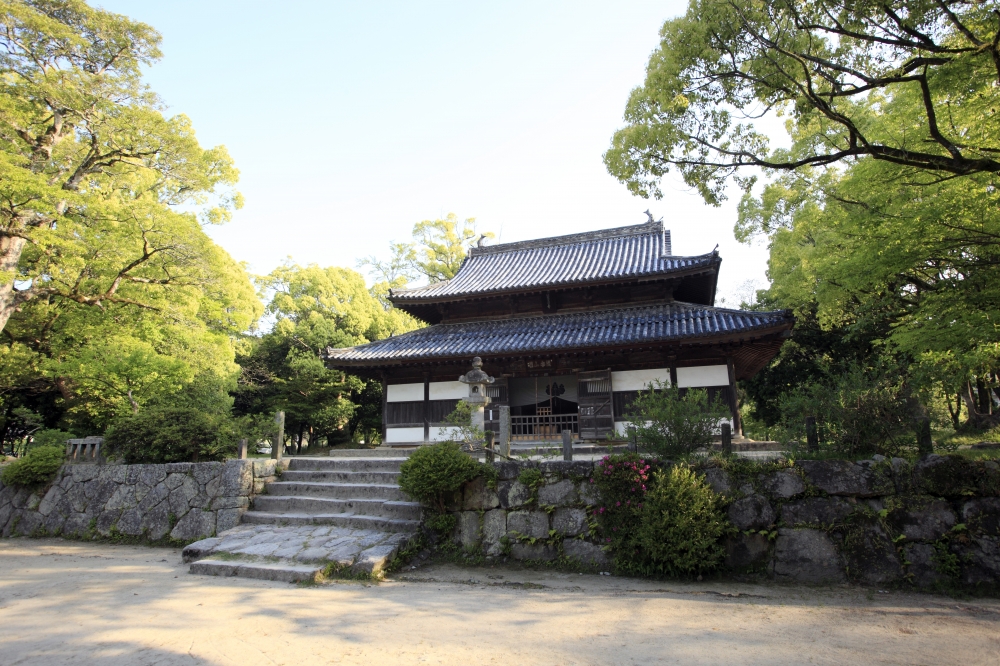
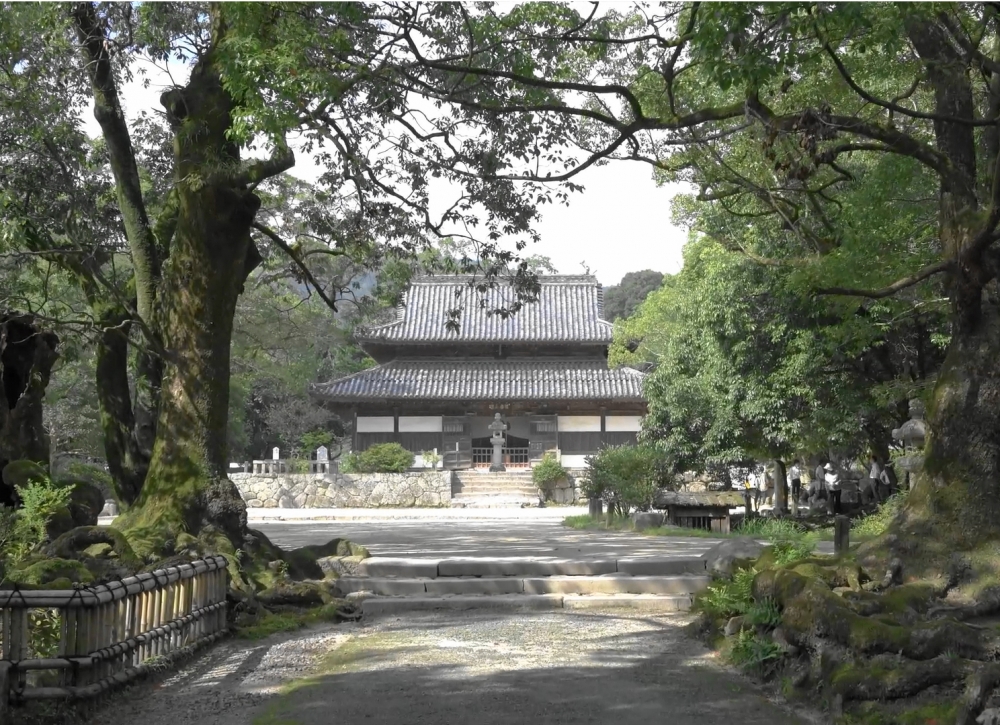







【National Historical Site
(Kanzeonji precinctand sub-temples ruins,attached Roji tile kiln ruins)
National Important Cultural Property(Sculpture)
Prefecturally Important Tangible Cultural Property(Architecture・Craft)】
This temple was built in the memory of the late Empress Saimei by her son, Emperor Tenji. There were as many as 49 sub-temples in the area, and even now foundation stones from temple buildings remain, giving evidence to the prosperity of this temple in ancient times. The temple had a Bugaku band that played music and performed dances that originated on the continent. Some masks of Bugaku Ryoo and Nasori (a nationally important cultural property) still remain. Also remaining is a burial mound for Priest Genbo, who conducted the Buddhist memorial service that marked the completion of the temple. Ganjin, a priest of the Tang dynasty and Kukai a priest who went to the Tang dynasty stayed here. The first commandments of Japanese Buddhism were likely delivered here, helping to make this temple one of the three official ordination halls in Japan. An ordination hall still operates at Kaidan-in. The 16 Buddhist statues placed in the temple (nationally important cultural properties) were sophisticated images made during the Heian and Kamakura periods, indicating that Buddhist culture continued to flourish in this area.
Even now, Kanzeon-ji (the Main Hall and Lecture Hall are prefecturally important tangible cultural properties) and Kaidan-in (the Main Hall, Bell Tower and Bell are prefecturally important tangible cultural properties) stand to pass down the light of Buddhism to current generations.